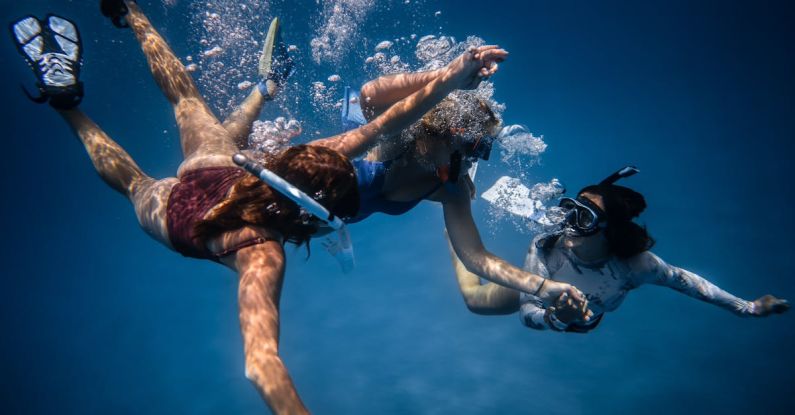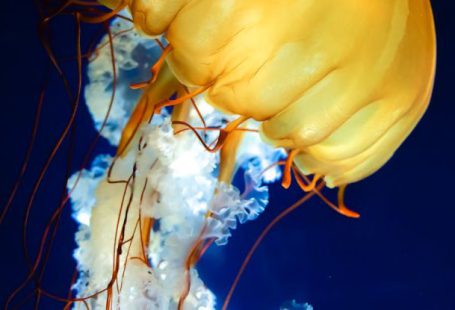Diving deep into the underwater world is an exhilarating experience for many, but effectively communicating with your diving buddy or team can be a challenge. Whether you are a beginner or an experienced diver, mastering communication techniques underwater is crucial for safety and enjoyment. In this article, we will explore some valuable tips on how to communicate effectively while submerged in the depths of the ocean.
Clear Hand Signals
One of the most commonly used methods of communication underwater is through hand signals. Clear and concise hand signals are essential for conveying messages to your diving partner or group. Before heading underwater, ensure that you and your diving companions are familiar with a set of standardized hand signals to avoid any confusion during the dive. Practice these signals on the surface to ensure that everyone understands their meanings and can respond appropriately when underwater.
Maintain Eye Contact
While underwater, visibility can vary depending on the conditions and depth of the dive. To enhance communication, maintaining eye contact with your diving buddy is vital. By establishing visual contact, you can convey messages and share information without relying solely on hand signals. Additionally, eye contact can help build trust and camaraderie among diving partners, fostering a stronger sense of teamwork and safety during the dive.
Use Dive Slates
In situations where verbal communication is not feasible, dive slates can be invaluable tools for exchanging information underwater. Dive slates are small, waterproof boards that allow divers to write messages or draw diagrams to communicate with each other. Before the dive, agree on a set of symbols or codes to use on the slate to convey essential messages efficiently. Practice using dive slates during training sessions to ensure that everyone is comfortable with this method of communication.
Stay Close and Maintain Position
When diving in a group, staying close to your diving companions and maintaining proper positioning is crucial for effective communication. By staying within visual range of each other, you can quickly convey messages through hand signals or gestures. Additionally, maintaining proper positioning within the group ensures that everyone is aware of their surroundings and can respond promptly to any changes or emergencies that may arise during the dive.
Practice Active Listening
Effective communication is a two-way street, and active listening plays a vital role in underwater communication. Pay close attention to the messages conveyed by your diving partner or team members and respond appropriately. Acknowledge receipt of messages through hand signals or gestures to indicate understanding and agreement. By practicing active listening, you can enhance the overall communication experience underwater and ensure that everyone remains informed and engaged throughout the dive.
Respond Promptly to Signals
In the dynamic environment of the underwater world, quick and decisive responses to signals are essential for maintaining safety and coordination within the diving group. When receiving a hand signal or message from your diving buddy, respond promptly to indicate that you have understood the message and are prepared to act accordingly. Timely responses to signals help streamline communication underwater and prevent misunderstandings or delays that could compromise the safety of the dive.
Practice Emergency Procedures
In the event of an emergency underwater, effective communication is critical for implementing emergency procedures and ensuring the safety of all divers involved. Before each dive, review and practice emergency procedures with your diving group, including signals for distress, out-of-air situations, and lost diver scenarios. By familiarizing yourself with these procedures and practicing them regularly, you can respond swiftly and decisively in the event of an emergency, minimizing risks and ensuring a safe outcome for everyone involved.
Adapt to Changing Conditions
Underwater environments can be unpredictable, with conditions varying from one dive to the next. To communicate effectively in changing conditions, be flexible and adaptable in your approach to communication. Adjust your hand signals, gestures, or communication methods based on the visibility, current, and other factors that may impact communication underwater. By remaining flexible and adaptable, you can overcome challenges and communicate effectively in diverse underwater environments, enhancing the overall diving experience for you and your diving companions.
Stay Calm and Focused
Maintaining a calm and focused demeanor underwater is essential for effective communication and overall safety during the dive. In stressful situations or emergencies, it is crucial to remain composed and focused on conveying messages clearly and efficiently to your diving partners. Practice mindfulness techniques and breathing exercises to stay calm and centered while underwater, allowing you to communicate effectively and respond thoughtfully to any challenges that may arise during the dive.
In Summary
Effective communication underwater is a fundamental aspect of safe and enjoyable diving experiences. By utilizing clear hand signals, maintaining eye contact, using dive slates, staying close to your diving companions, practicing active listening, responding promptly to signals, rehearsing emergency procedures, adapting to changing conditions, and staying calm and focused, you can enhance your communication skills and ensure a successful dive. Remember that effective communication is key to building trust, teamwork, and safety among diving partners, allowing you to explore the wonders of the underwater world with confidence and camaraderie.





